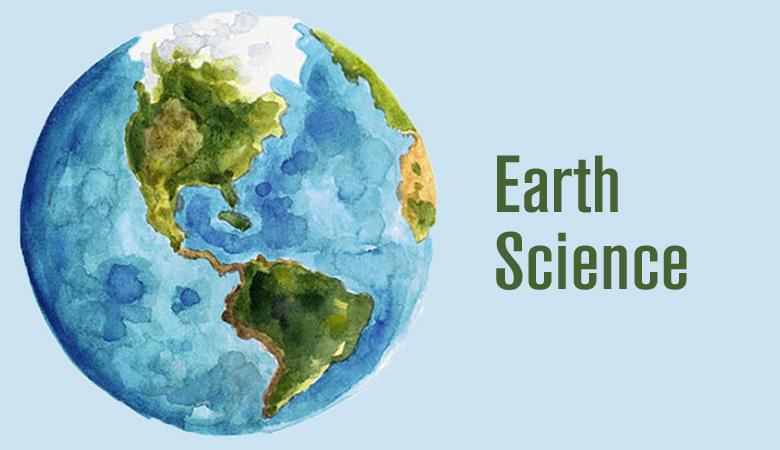Earth Science
- Resources: Getting Started; Unit 1: Origin of the Universe and Our Solar System; Unit 2: Earth's Interior and Plate Tectonics; Unit 3: Landscapes and Surface Processes; Unit 4: Geologic History and Evolution of Life; Unit 5: The Earth-Sun-Moon System; Unit 6: Weather; Unit 7: Geography, Climate, and Human Cities; Unit 8: Review.
- Earth science or geoscience includes all fields of natural science related to planet Earth. This is a branch of science dealing with the physical and chemical constitution of Earth and its atmosphere. Earth science can be considered to be a branch of planetary science, but with a much older history.
The earth science degree is a flexible but focused program, allowing you to take courses in biology and sustainability-related topics that will give.

Introduction to Earth Science
Earth's Surface
Minerals
Rocks
Earth's Energy
Plate Tectonics
Earthquakes
Volcanoes
Weathering and Formation of Soil
Erosion and Deposition
Evidence about Earth's Past
Earth's History
Fresh Water
Oceans
Atmosphere
Weather
Climate
Ecosystems and Human Populations
Human Actions and the Land
Human Actions and Earth's Resources
Human Actions and Earth's Water
Human Actions and the Atmosphere
Observing and Exploring Space
Earth, Moon, and Sun
The Solar System
Stars, Galaxies, and the Universe
The Division of Earth Sciences supports proposals for research geared toward improving the understanding of the structure, composition, and evolution of the Earth, the life it supports, and the processes that govern the formation and behavior of the Earth's materials. The results of this research will create a better understanding of the Earth's changing environments, and the natural distribution of its mineral, water, biota, and energy resources and provide methods for predicting and mitigating the effects of geologic hazards such as earthquakes, volcanic eruptions, floods, landslides.

Earth science is the study of the Earth's structure, properties, processes, and four and a half billion years of biotic evolution. Understanding these phenomena is essential to maintenance of life on the planet. The expanding world population demands more resources; faces increasing losses from natural hazards; and releases more pollutants to the air, water, and land. Sustaining our existence requires scientific understanding of the natural materials and processes linking the geosphere, hydrosphere, atmosphere, and biosphere. Life prospers or fails at the surface of the Earth where these environments intersect.

The knowledge gained and the services provided by earth scientists help society cope with its environment in many ways. Their knowledge about the structure, stratigraphy, and chemical composition of the earth's crust helps us locate resources that sustain and advance our quality of life. Understanding the forces in the crust, and the natural processes on the surface allows us to anticipate natural disasters such as volcanoes and earthquakes, and geologic environments, such as damaging mining practices or improper waste disposal, gives us information to correct such practices and design more benign procedures for the future. Finally, a comprehensive perception of planetary physics will allow us to anticipate major changes in global environmental conditions and control or acclimate to those changes.
Earth Science Definition
In general use, the term 'earth science' often includes the study of the earth's atmosphere (meteorology or atmospheric science), the water flowing on and beneath the surface of continents (hydrology), and the earth's seas and oceans (oceanography or ocean sciences). The NSF organizational taxonomy defines earth science as including the fields of 'solid-earth' science (geology, geochemistry, and geophysics (plus continental hydrology. It excludes the 'fluid-earth' sciences of oceanography and atmospheric science, which have their own respective divisions in the organization, and are covered in other reports in this series. The NSF Division of Earth Sciences is part of the Geosciences Directorate that also includes the divisions of Atmospheric Sciences and Ocean Sciences. The term 'geosciences' is similarly used to represent only the 'solid-earth' sciences or solid and fluid sciences depending on the context, so care must be always exercised when interpreting data regarding the earth science fields from various sources.
Life Science
Banner Photo Credit: Volcanic Eruption. ©Tom Pfeiffer (www.decadevolcano.net/VolcanoDiscovery.com)


